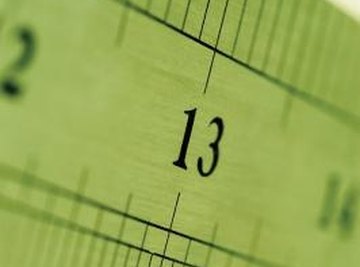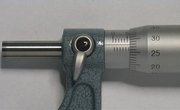
Thickness measuring tools come in all sizes and shapes, with different measurement ranges and techniques. Thickness measuring is important in many industries, and there are areas such as aeronautics where material thickness needs to be very precise, otherwise the results may be catastrophic. Thickness measuring tools can be either mechanical or digital.
Vernier Caliper
A vernier caliper is a high-precision measurement tool that can be used in multiple types of measurements. It can measure thickness, diameter and even inside diameter for pipes. It consists of two jaws for thickness measurement, two smaller jaws for measuring inner diameters and a scaled handle. The lower thickness measuring jaw is connected to the lower smaller jaw, and there is also another scale on the whole piece. The ensemble slides on the handle of the vernier caliper when you open the jaws to make a measurement, and the combination resulting from the two scales gives the precise measurement. Vernier calipers have a reading error of 0.05 mm.
Micrometer
The micrometer is the most precise mechanical measurement tool. It consists of a thimble with a rotating screw in one end and a frame at the other end. Inside the thimble, a spindle moves with the rotation of the screw. The object to be measured is inserted into the frame, between the spindle and the anvil situated at the opposite end of the frame, and the screw is rotated until the object is fixed between the spindle and the anvil. There are two reading scales, one situated on the thimble, and another one on the body over which the thimble is rotated, called the barrel. Micrometers have a reading error of around 0.003 mm.
Film Thickness Measurement Systems
These systems are used for measuring the thickness of films or other semiconductor materials. The measurement is taken using light reflections and a computer to process and display the reading. The thickness measurement range is from 1 nm to 1 mm. These systems are usually used in scientific laboratories, and their main disadvantage is their price, which can go up to tens of thousands of dollars.
References
About the Author
Lenna Allen began her writing career for her college newspaper in 1999. Allen is a marketing specialist and freelance writer for several online publishers including eHow.com. Allen holds a Bachelor of Arts in communication and digital technology from Washington State University.
Photo Credits
Medioimages/Photodisc/Photodisc/Getty Images
